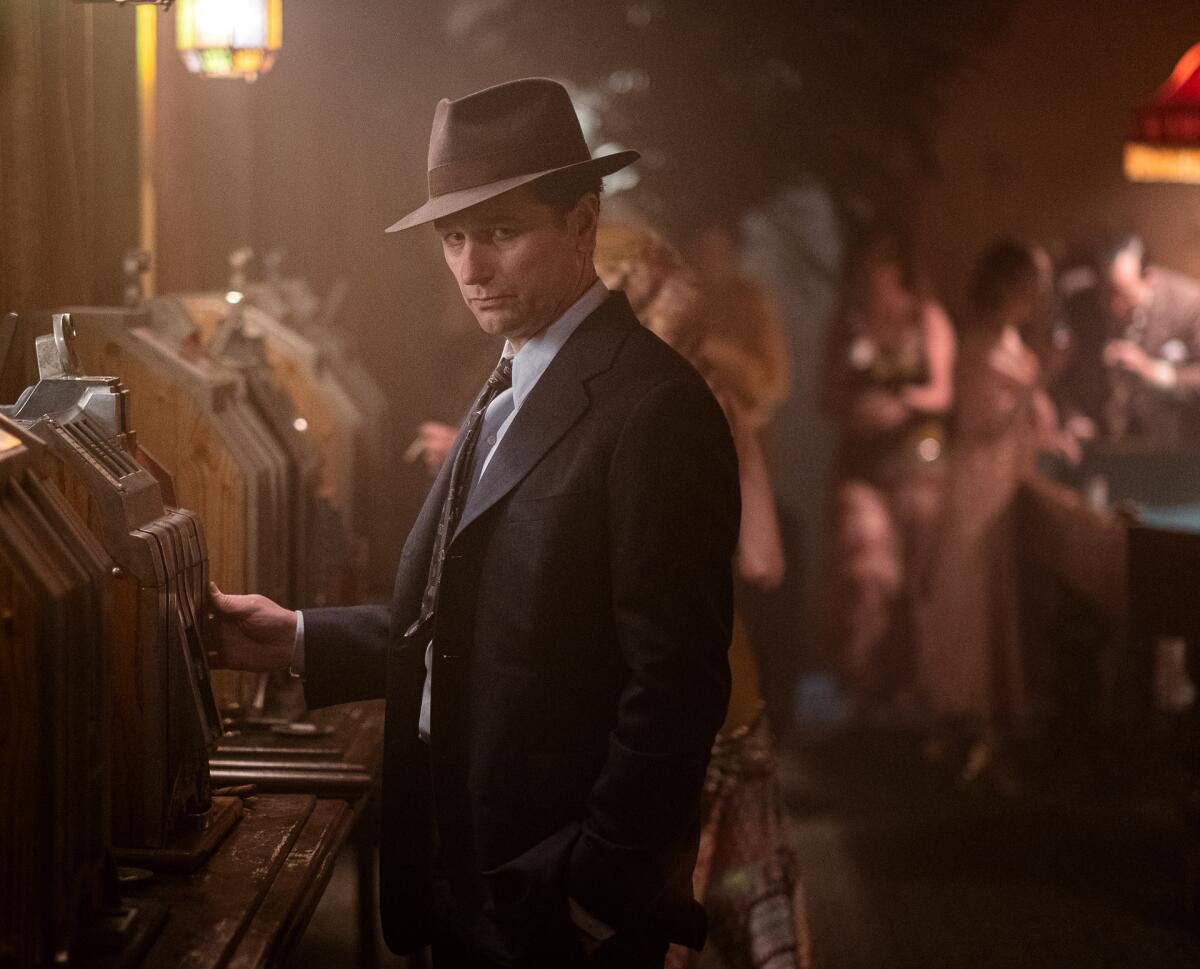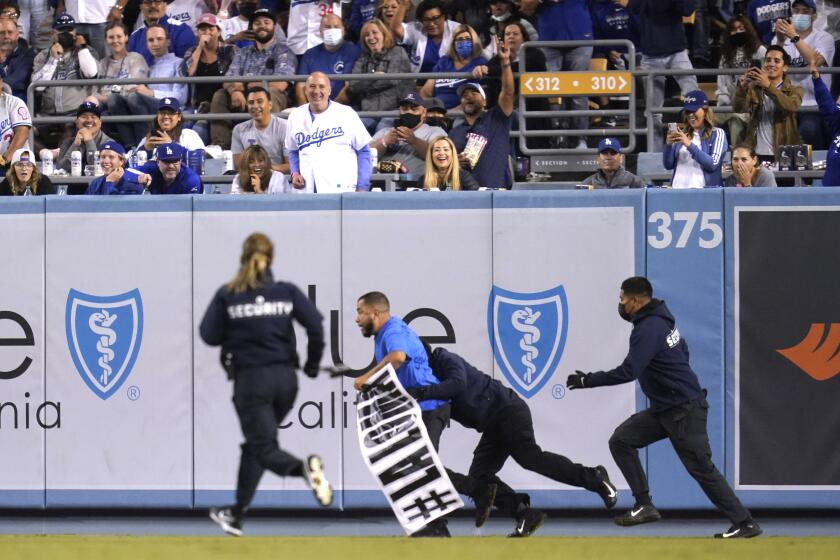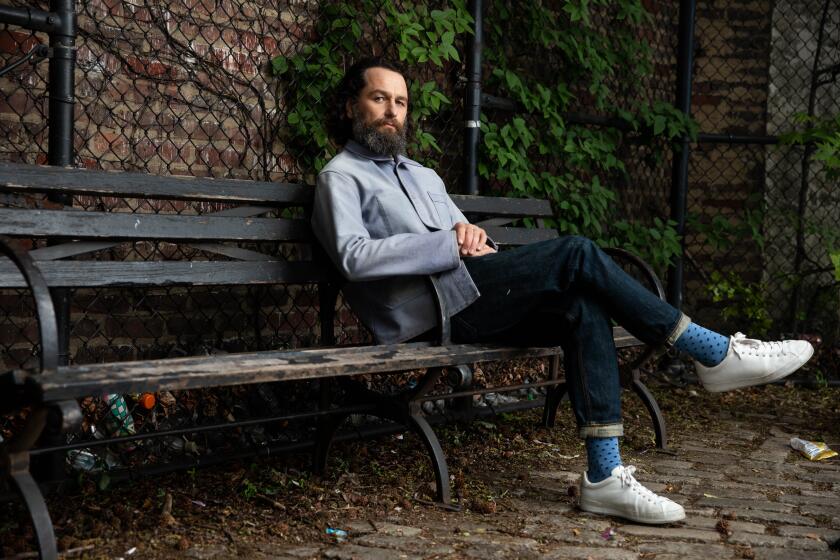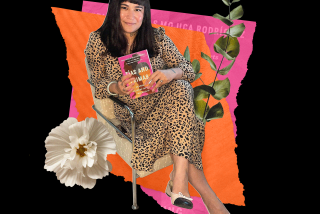Opinion: How I helped TV’s ‘Perry Mason’ find the real Latinx L.A.

I grew up in a Spanish-speaking home in Echo Park. On my mother’s one day off a week from her restaurant, we’d go to matinees at Grauman’s Chinese Theatre. We rarely saw people like us on the screen, but on TV, I watched “I Love Lucy”: finally, a Latino lead actor who even spoke Spanish, though it made him the butt of other characters’ jokes. I remember the season the Ricardos and Mertzes relocated to Hollywood for Ricky’s career, which made me think I’d want to go there too — not realizing, at the time, that I was already here.
My community’s Hollywood history, or rather the lack of it, is why I said yes when I was invited to consult on Season 2 of the HBO series “Perry Mason.” The eight-episode serial, which is set in 1930s Los Angeles, centers on a mystery: Brooks McCutcheon, eager to put his mark on the city and — as the son of a powerful, rich white capitalist, well-positioned to do so — is killed, and two Latino brothers, Mateo and Rafael Gallardo, are charged with the crime.
I’d served as a historical consultant before for documentaries, government agencies (including the State Department), corporations (Amazon), museums and nonprofits, but this would be my first time helping with a television show. A team of formidable scholars was already meeting with producers and showrunners who took very seriously the idea that no detail was too small to get right.
The Nayarit Restaurant’s authentic Mexican food, diverse clientele and ripple effect helped make L.A., and Echo Park, what it is today.
My role was to help with Latinx and Los Angeles history: how different characters would have referred to the LAPD and FBI during in Depression-era L.A.; what words English- and Spanish-speakers would have used to protest and show dissent; what jump-rope songs would have been sung on sidewalks and streets.
Of course, “Perry Mason” isn’t a documentary: History informs the story, but it does not organize it. Still, I liked that the show adapted historical events so that — even as they were altered for the pressures of plot and character — audiences could get a real sense of how the past might have looked, sounded and felt. And not just for those in power, the usual suspects we read about in history books and on historical plaques or see portrayed in monuments, but for people whose daily lives and stories we rarely get a glimpse of.
One central plot point, for example, is that McCutcheon, trying to build his legacy and please his impossible-to-please father, hopes to build a baseball stadium in order to lure a Major League team to Los Angeles. Viewers who know Dodgers history will see the resonance with the way the team was lured from Brooklyn to L.A. — although that happened in 1958, not 1933. Dodger Stadium opened, in 1962, atop what had been a predominantly Mexican and Mexican American neighborhood, Chavez Ravine, which had been seized by the city and razed for public housing projects that were never built, then handed over to Walter O’Malley.
Three protesters wanted to remind L.A. about the Latino families uprooted to build Dodger Stadium. But even many Latino fans just aren’t interested.
The way the Gallardo brothers are rounded up roughly, put on trial and, due to xenophobic stereotyping, presumed guilty by the public and judicial officers alike, also stirs up memories of another piece of local history, the 1942 Sleepy Lagoon murder case. Two dozen young Mexican American men were railroaded by the public, the police and the courts. Here too, the timing and the details are different, but the show makes clear what Latino youths were subjected to then — a situation that isn’t all that different now.
As the showrunners worked to tell these stories, we talked together about not just what happened in Latinx Los Angeles but why, what it meant to the community then, how these events are remembered or not today and the toll it takes when a community’s history gets buried or falsified.
We debated the nuances. The Gallardo family at the center of the drama is a blended family, a mix of Mexican immigrants and Mexican Americans. Their Spanish would have been Americanized, not textbook and not always grammatical. Do you write in verbal mistakes because it reflects historical reality, or leave them out because Spanish speakers now might think that you aren’t attentive to language details? We kept the variations.
The actor takes his Perry Mason from shaggy private investigator to ad-hoc law student to fledgling attorney in HBO reboot.
I got to hide “easter eggs” in some episodes, little gifts for my family: For one character, who had a patron saint, I suggested El Santo Niño de Atocha — my grandmother’s favorite. When we needed a name for a Mexican American girl, I suggested one that could be pronounced in English and Spanish, Rosanna — my cousin’s name. (As someone miscalled “Natalie” my entire life, I imagined the character would want to be saved from a similar fate.)
Of course, the show doesn’t tell anyone’s particular family history — nor, for that matter, the particular histories of Chavez Ravine and Sleepy Lagoon. But it does tell stories that are closer to my family’s lived experience than the ones I used to see in Hollywood productions, and close to the ones that, as a historian, I know.
I hope the historical details in “Perry Mason” will make audiences more curious about L.A.’s complex past. If they recognize the past in the present, even better.
Natalia Molina is a MacArthur fellow and a professor of American studies and ethnicity at USC. Her latest book is “A Place at the Nayarit: How a Mexican Restaurant Nourished a Community.”
More to Read
A cure for the common opinion
Get thought-provoking perspectives with our weekly newsletter.
You may occasionally receive promotional content from the Los Angeles Times.













